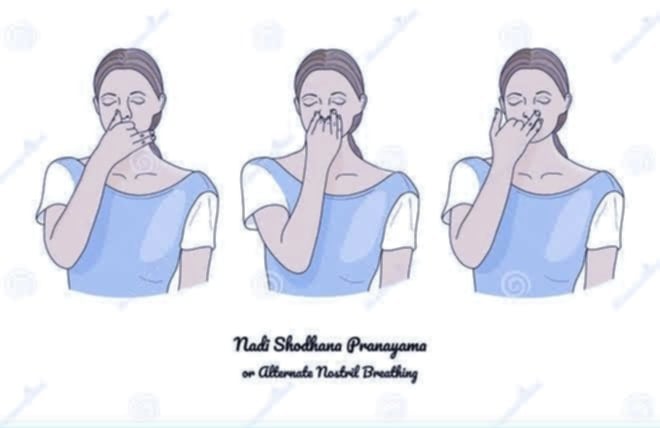
Pranayama: The Sacred Art of Breath Control in Yoga and Ayurveda
Pranayama is a key practice in both Yoga and Ayurveda, and it plays a central role in the spiritual, physical, and mental well-being of a practitioner. Derived from two Sanskrit words, prana (meaning “life force” or “vital energy”) and ayama (meaning “control” or “extension”), pranayama refers to the control of breath to enhance the flow of energy within the body and mind. It is considered one of the most effective tools for achieving balance, clarity, and spiritual enlightenment.
In this article, we will explore the meaning of pranayama, its significance in Yoga and Ayurveda, and how it can transform your overall health and consciousness.
The Meaning of Pranayama
Prana, the vital life energy, flows throughout the body, sustaining every cell and system. It is considered to be the fundamental energy that governs not just the physical body but also our thoughts, emotions, and consciousness. Ayama, on the other hand, refers to the control, extension, and regulation of this energy.
When you practice pranayama, you are consciously controlling your breath, which directly influences the flow of prana in the body. In yogic terms, breath is seen as the bridge between the body and mind, and controlling it can lead to profound transformations in both.
Pranayama techniques vary, ranging from deep, slow breathing to rapid, forceful exhalations, each having a different effect on the physical body, mind, and energy field.
The Significance of Pranayama in Yoga
In the context of Yoga, pranayama is often seen as a crucial part of the eight-limbed path outlined in Patanjali’s Yoga Sutras. In this framework, pranayama comes after the practice of asanas (physical postures) and prepares the body and mind for meditation (dhyana). The role of pranayama in yoga can be understood as follows:
- Mind-Body Connection: Through breath control, pranayama creates a profound connection between the mind and body. It helps synchronize mental and physical states, aligning the body with the mind’s focus. This integration allows for greater mindfulness, deepened meditation, and a sense of harmony between the two.
- Purification and Detoxification: In Yoga, the breath is seen as a cleansing force. Pranayama helps clear pranic blockages (energetic blockages), allowing for the free flow of energy throughout the body. This process is thought to detoxify the mind and body, leading to better health, emotional clarity, and spiritual awareness.
- Calming the Nervous System: Many pranayama techniques involve slow, deep breathing, which calms the nervous system, reduces stress, and promotes a sense of peace. Regular practice can lower levels of the stress hormone cortisol and activate the parasympathetic nervous system (the “rest and digest” system), encouraging relaxation.
- Energy Awakening: By controlling the breath, pranayama stimulates and elevates prana (life force energy) within the body. It helps increase vitality and endurance, activating the dormant energy channels (nadis) and balancing the flow of energy throughout the body.
- Mental Clarity and Focus: Breath control sharpens concentration and enhances mental clarity. With regular practice, pranayama can lead to improved cognitive function, enhanced memory, and the ability to focus deeply in meditation or other aspects of life.
The Significance of Pranayama in Ayurveda
Ayurveda, the ancient system of natural healing and medicine, views the body, mind, and spirit as interconnected. The practice of pranayama plays a significant role in maintaining balance within the body’s doshas (energetic forces: Vata, Pitta, and Kapha), and it is an important tool in Ayurvedic healing and well-being.
- Balancing the Doshas: In Ayurveda, health is achieved when the three doshas are in balance. Since each dosha is associated with specific qualities of energy (Vata is air and space, Pitta is fire and water, Kapha is earth and water), pranayama can be tailored to balance each dosha. For example:
- Vata imbalance (associated with anxiety, dryness) can be soothed with grounding pranayama techniques like Ujjayi or Nadi Shodhana (alternate nostril breathing).
- Pitta imbalance (associated with anger, inflammation) may benefit from cooling techniques like Sheetali (cooling breath).
- Kapha imbalance (associated with lethargy, congestion) can be alleviated through energizing pranayama techniques like Kapalbhati (skull shining breath).
- Enhancing Digestion and Detoxification: Pranayama improves the flow of oxygen and energy throughout the body, which in turn enhances the digestive process. This is crucial in Ayurveda, where digestion (or Agni, the digestive fire) is considered the foundation of health. Certain pranayama techniques, such as Bhastrika (bellows breath), are thought to stimulate the digestive system and help eliminate toxins (ama) from the body.
- Strengthening Immunity: The practice of pranayama is also linked to the strengthening of the immune system in Ayurveda. By increasing the circulation of oxygen and prana, pranayama boosts the body’s natural defenses and helps keep diseases at bay. It also increases mental resilience, helping the body to cope better with stressors and environmental changes.
- Emotional and Mental Balance: Ayurveda recognizes the intimate connection between the mind and body. Breath control techniques like pranayama help release mental toxins and emotional stress. By regulating the breath, pranayama soothes the nervous system, balances mood, and brings emotional stability — an essential aspect of mental health in Ayurvedic philosophy.
- Spiritual Healing: Just as pranayama promotes physical and mental well-being, it also supports spiritual health in Ayurveda. Breathwork is believed to enhance the Sattva (mental clarity and purity) and diminish Rajas (activity) and Tamas (inertia), leading to greater spiritual awareness, peace, and enlightenment.
The Types of Pranayama
There are many types of pranayama techniques, each with its specific benefits:
- Ujjayi (Victorious Breath): A calming technique that involves deep, slow breaths with a slight constriction at the back of the throat, creating a soft sound. Ujjayi is often used to focus the mind and regulate the breath during meditation or asana practice.
- Nadi Shodhana (Alternate Nostril Breathing): A balancing technique that involves inhaling and exhaling through one nostril at a time. It calms the nervous system, balances the hemispheres of the brain, and improves concentration.
- Kapalbhati (Skull Shining Breath): A fast-paced breath technique that involves quick exhales and passive inhales. It invigorates the body, clears the mind, and enhances digestion by stimulating the abdominal area.
- Bhastrika (Bellows Breath): A dynamic and energizing technique that involves rapid inhalation and exhalation, stimulating the energy channels and increasing oxygen flow throughout the body.
- Bhramari (Bee Breath): This involves inhaling deeply and exhaling with a humming sound, resembling the sound of a bee. It calms the mind, reduces stress, and promotes inner peace.
The Power of Pranayama
In both Yoga and Ayurveda, pranayama holds a place of utmost importance. It is not just a physical exercise; it is a deeply spiritual and healing practice that connects you to your own energy, the universe, and your higher self. By mastering breath control, pranayama enhances mental clarity, emotional balance, and physical health, leading to a harmonious and vibrant life.
As you continue to explore pranayama, remember that it is a tool for transformation, offering a direct pathway to inner peace, vitality, and spiritual awakening. Whether you’re practicing for physical health or spiritual growth, pranayama helps you tune into the flow of prana and awaken your full potential.


